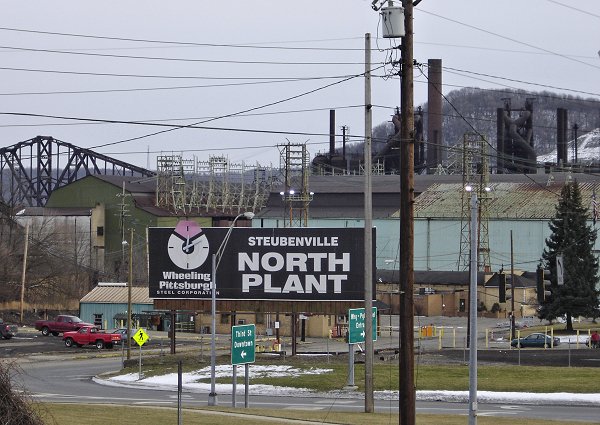

Over at Compact, Alex Hogan, a speechwriter for the International Brotherhood of Electrical Workers, remembers a Steubenville, Ohio union hall. A taste:
Today, it stands—like many former businesses, homes, and churches in Steubenville—empty. The union hall is a victim of both the collapse of America’s steel industry and the decimation of organized labor. Steubenville, which lies on the Ohio River bordering West Virginia, is the prototypical Rust Belt town. So much so that it was one of the locations for the 1978 film The Deerhunter, which follows a group of steelworker friends serving in the Vietnam War. At one point, Steubenville was home to some 30,000 steelworkers and an equally strong labor movement. But that was decades ago. With the local manufacturing economy destroyed, the steelworker hall is largely an artifact of the past, just another empty building on another empty block.
Too often, analysts describe the decline of unions solely in terms of political economy. As important as that is, America lost something else when we lost strong local unions. Local 1190 was just one of thousands of now-shuttered union halls across the industrial heartland that served as critical community institutions, a flourishing civil society that stood between the individual worker and the forces of concentrated corporate power.
As labor historian Robert Bruno wrote in his study of steelworkers in his hometown of Youngstown, Ohio, “the function of the union for the steelworkers was not limited strictly to workplace representation or institutional opposition to capital. The union was an agent of social formation.” Through charity, neighborhood socialization, and political mobilization, union halls gave workers ownership in their community and jobs that incubated the values of hard work, active citizenship, and an inclusive “common-man” patriotism. These efforts helped generate one of America’s most vibrant examples of associational democracy in action.
The singular focus of Western liberalism on individual liberty has overshadowed another critical tradition, one emphasized by thinkers from Alexis De Tocqueville to Pope Pius XI, that sees voluntary bottom-up associations, not rational self-interest, as the most important guarantee of individual liberty. In his seminal book The Quest for Community, conservative sociologist Robert Nisbet described associations as forms of authority “rooted in the statutes, functions, [and] allegiances, which are components of any associations” and are based on the free consent of its members. He contrasted this with power—external, unaccountable, and originating from the outside. The best check against external, unaccountable power is the multiplication of smaller authorities such as labor associations. Freedom, Nisbet insisted, is “nourished by competition among authorities.”
Writing from the vantage point of the 1950s, Nisbet saw centralized government as the main threat to freedom. But for workers in pre-New Deal Logan County, W.Va., or Homestead, Pa., big government wasn’t the problem. Big corporations were. They ran the towns. They ran the police. And they often ran the stores, as well. In some mining communities, they even ran the churches.
Organized labor provided a counter-authority—an institution created and run by workers—that gave members a sense of independence, occupational pride, and a platform for civic engagement. When times were tough, workers could count on the charity of their co-workers, not the company. Collective bargaining gave workers a sense of equal standing with employers. Unions also augmented the strength of other civic associations, most notably churches.
Read the entire piece here.
I am now playing Tennessee Ernie Ford’s “Sixteen Tons” in my head, John!
I don’t know that song, but I am definitely going to check it out.